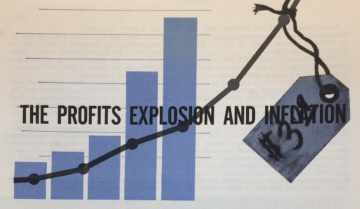 Andrew Yamakawa Elrod in Phenomenal World (image: Reprint from the September 1966 issue of AFL-CIO American Federationist, Box 38, Folder 4, William Page Keeton Papers, Special Collections, Tarlton Law Library, The University of Texas at Austin):
Andrew Yamakawa Elrod in Phenomenal World (image: Reprint from the September 1966 issue of AFL-CIO American Federationist, Box 38, Folder 4, William Page Keeton Papers, Special Collections, Tarlton Law Library, The University of Texas at Austin):
In the decades after the Civil War, Andrew Carnegie captured the American steel industry by pushing down prices. So effective was the Scottish-born telegraph operator at reducing costs, breaking cartels, and driving competition into bankruptcy during the downturns of the 1880s and 1890s, that J.P. Morgan bought out the 66-year-old Carnegie to protect the profitability of his holdings and stabilize the nation’s industrial life. When Morgan incorporated U.S. Steel in 1901, the unprecedented combine controlled two-thirds of the nation’s steelmaking capacity. For the next six decades, the company set the price of steel in the American market, anchoring industry prices by cutting last in recessions and raising last in expansions. Under this “price umbrella,” the other dozen companies owning steel factories in the US remained profitable and expanded healthily. Industry-wide, ingot capacity expanded from 21.5 million to 71.6 million tons between the firm’s creation and the eve of World War II.
Ever since Alfred Marshall first popularized a rough graph of the crossing schedules of supply and demand in 1890, a strain of Anglo-American thinking has fixated on the disruptions caused by the ancient practice of controlling prices. Impose a ceiling too low, theory teaches, and the quantity demanded will outpace the quantity supplied; a floor too high, and producers will build up surpluses above what consumers are willing to absorb at current prices. Because wants are always changing, any ceiling or floor will eventually produce such “distortions.” Limit any price and the whole society may begin to convulse.
More here.
